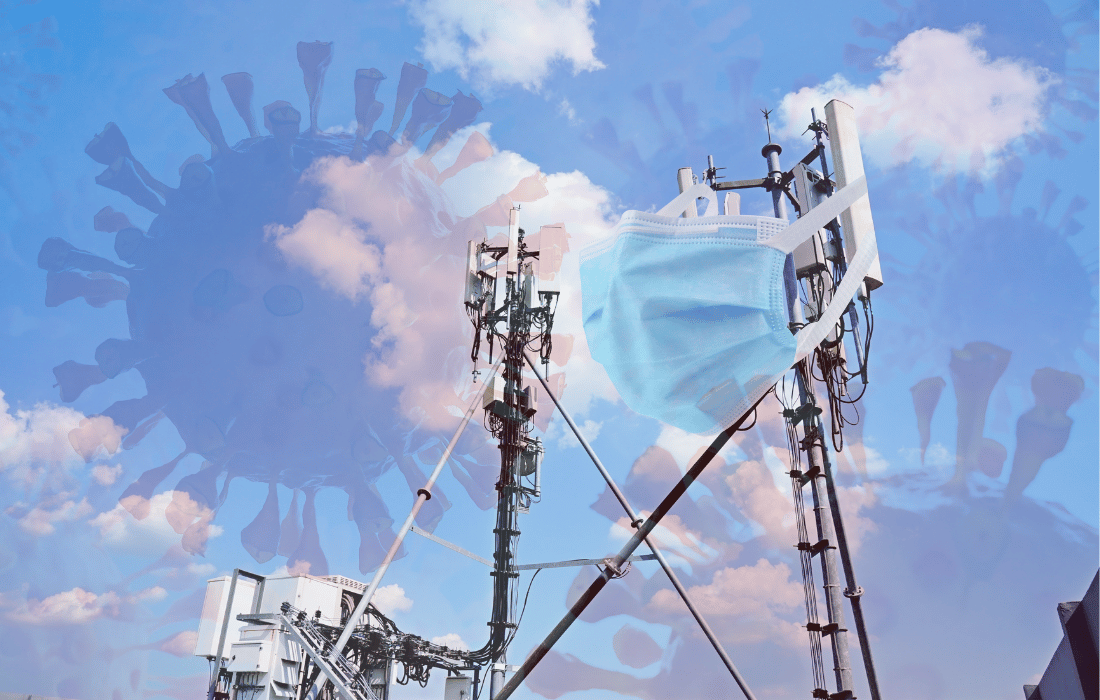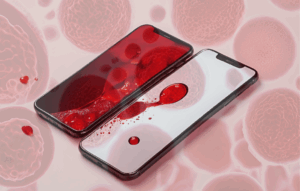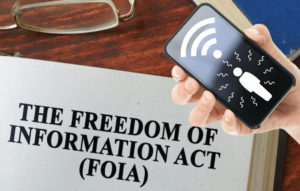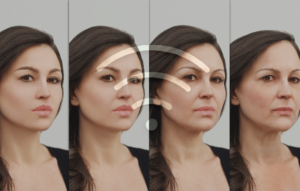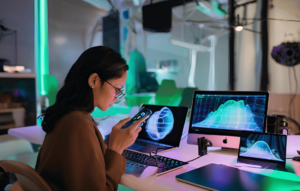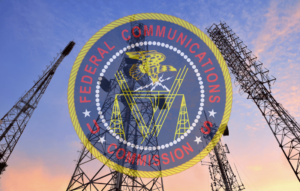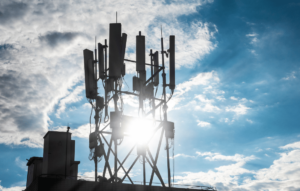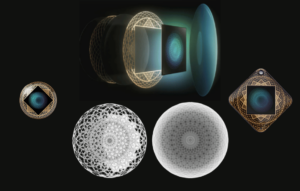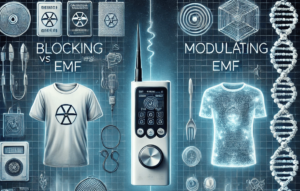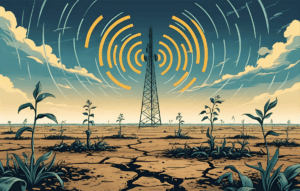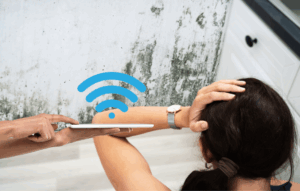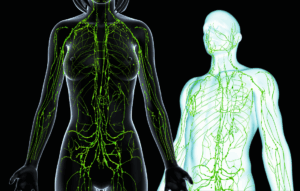When COVID-19 swept across the globe, public health responses zeroed in on the virus itself—SARS-CoV-2. While many important strides were made in identifying high-risk populations and viral mechanisms, one key variable has remained largely absent from public dialogue: our environment.
While theories surrounding the origin of COVID-19 continue to spark debate, this article is not concerned with where the virus came from. Instead, we examine whether wireless radiation, especially from 5G, made COVID-19 worse. Given the well-established science showing that EMFs can exacerbate existing conditions, the answer deserves serious consideration.
One key variable that’s been missing from the broader public health conversation is our environment, specifically, the role of wireless communication radiation (WCR).
This article dives deep into the possibility that radiofrequency radiation (RFR) from wireless communications technology, including 5G, acted as an environmental cofactor that worsened COVID-19 outcomes. Using a 2021 peer-reviewed study by the Journal of Clinical and Translational Research as a primary source, and further supported by first-hand accounts and policy critiques, we explore the extensive scientific and anecdotal evidence that links wireless radiation to the same physiological systems disrupted in COVID-19.
Understanding the Epidemiological Triad
The epidemiological triad (agent-host-environment) is a foundational model in public health that helps explain how diseases arise and spread. It underscores the importance of examining not just the virus (the agent) or the person infected (the host), but also the environment that surrounds and interacts with both. In the case of COVID-19, widespread exposure to wireless communication radiation (WCR) is one such environmental factor that may have played a significant, yet overlooked, role in shaping disease severity and susceptibility.
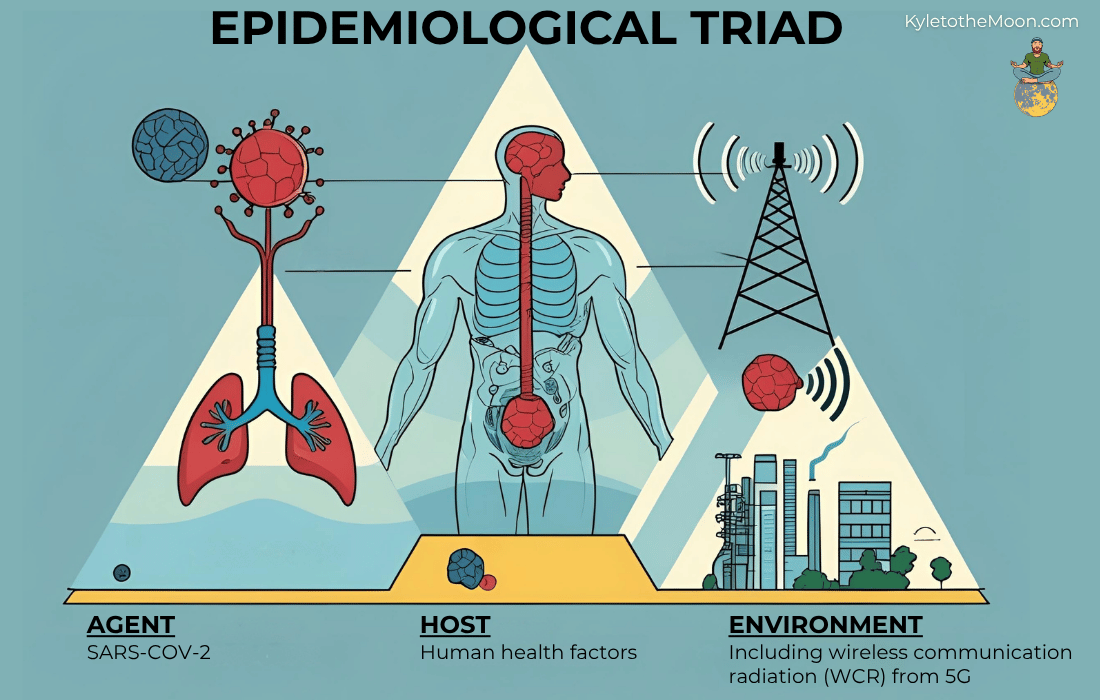
Here’s a quick breakdown of the triad:
Agent: The pathogen or microorganism that causes the disease. In this case, SARS-CoV-2.
Host: The human body and its biological, genetic, and health conditions that determine how it responds to the agent.
Environment: All external factors that influence exposure, transmission, and severity. This includes everything from air quality and nutrition to radiation exposure and housing conditions.
Rubik and Brown argue that ambient WCR, particularly from 5G networks, is a modern environmental stressor that weakens host resilience and could interact with the agent in ways that worsen disease outcomes. Including WCR in the environmental part of this triad opens the door to a broader and more holistic understanding of what made COVID-19 so destructive in certain areas.
Defining the Technology: Wireless Communication Radiation (WCR)
WCR refers specifically to electromagnetic fields (EMFs) emitted by wireless communication technologies such as cell towers, Wi-Fi routers, and 5G antennas. These operate across a wide frequency spectrum, from 600 MHz to nearly 100 GHz. 5G, in particular, utilizes millimeter waves (greater than 20 GHz) and necessitates a dense infrastructure with numerous small base stations strategically placed near homes, schools, and workplaces.
However, WCR is just one category within the broader family of non-native EMFs (electromagnetic fields), each with distinct frequency ranges, uses, and biological effects. Here’s a breakdown to help avoid confusion:
Extremely Low Frequency (ELF) EMFs: 1–300 Hz. Emitted from power lines, electrical wiring, and household appliances. Often associated with residential exposure.
Intermediate Frequency (IF) EMFs: 300 Hz–10 MHz. Found in things like anti-theft devices, induction cooktops, and some industrial equipment.
Radiofrequency (RF) EMFs: 10 MHz–300 GHz. This includes WCR and is generated by cell phones, Wi-Fi routers, Bluetooth devices, and all mobile network infrastructure (2G–5G).
Static Fields: 0 Hz. These include natural geomagnetic fields and man-made sources like MRI machines.
WCR is a subset of RF EMFs but is distinct because it is pulsed, modulated, and often combined with other frequencies for data transmission, which may increase its biological activity. Compared to ELF EMFs, which are typically continuous and unmodulated, WCR may have more disruptive biological effects, especially with long-term exposure.
Understanding this spectrum is essential as we evaluate how different forms of EMFs affect human biology, particularly when they are combined in everyday environments. WCR from 5G, in particular, represents a new level of environmental saturation that warrants deeper scrutiny.
Geographic Correlation Between COVID-19 and 5G
The virus first emerged in Wuhan, China, shortly after the city rolled out 5G on October 31, 2019. Other early hotspots included South Korea, Northern Italy, and major U.S. cities like New York, Seattle, and Los Angeles—all of which had active or rapidly expanding 5G infrastructure.
While correlation does not imply causation, these hotspots shared several key features:
High population density with a heavy reliance on wireless infrastructure
Early or aggressive implementation of 5G millimeter wave networks
Elevated baseline RF radiation levels, often measured in independent surveys or EMF mapping databases
A 2021 study by the European Society of Medicine found a statistically significant correlation between radiofrequency radiation intensity and COVID-19 mortality across 31 countries. Importantly, areas with higher exposure levels to wireless communication radiation (WCR) also had higher reported COVID-19 deaths.
Additional patterns worth noting:
Cities like Milan and New York had both 5G pilot programs and high excess mortality in the first wave of the pandemic.
Nations that delayed widespread 5G rollout, such as some in Eastern Europe or rural regions, often reported fewer early COVID-19 fatalities.
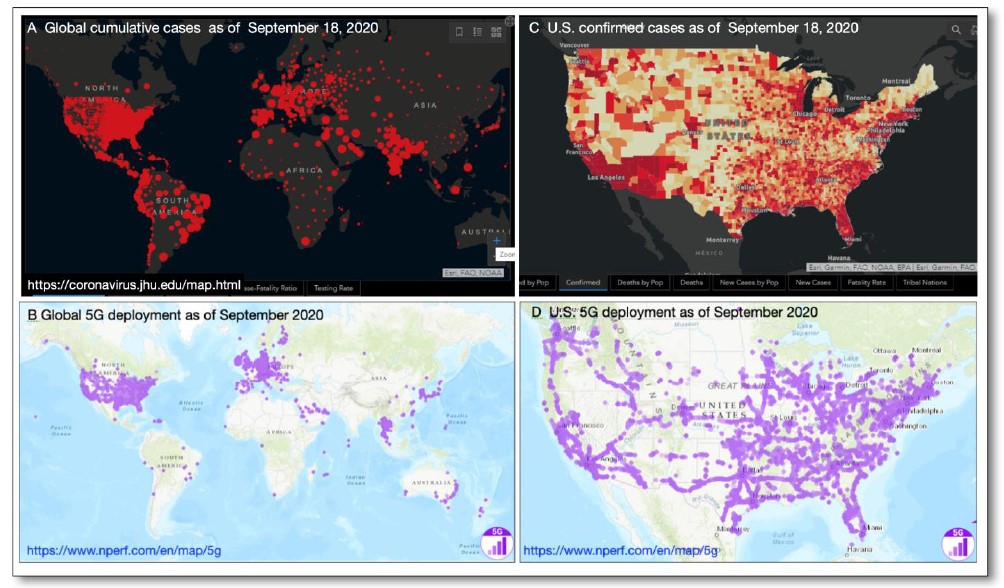
Critics of the correlation often overlook how WCR may serve as a compounding environmental stressor, not a direct cause. In the context of the epidemiological triad (agent, host, and environment), WCR could weaken host defenses or intensify disease pathology once the virus is contracted.
In other words, 5G did not cause COVID-19, but it may have amplified its severity in already exposed populations. This perspective aligns with the precautionary concerns raised by numerous scientists, physicians, and public health researchers worldwide.
Bioeffects of 5G Radiation: Parallels with COVID-19 Pathology
As we examine the biological impacts of 5G wireless radiation, several notable similarities emerge with the pathological features observed in severe COVID-19 cases. These parallels offer critical insights into how environmental stressors might amplify viral illnesses.
1. Blood Changes
5G WCR exposure causes:
Echinocytes (spiky red blood cells)
Reduced hemoglobin levels
Hypercoagulation
These are the same blood pathologies seen in severe COVID-19 patients, contributing to hypoxia and thrombosis.
2. Oxidative Stress
Both WCR and COVID-19 trigger high levels of reactive oxygen species (ROS), leading to:
Glutathione depletion
Mitochondrial dysfunction
Inflammatory tissue damage
Low glutathione is now recognized as a major factor in COVID-19 severity.
3. Immune Dysregulation
Wireless radiation and COVID-19 both reduce T-lymphocyte counts and elevate inflammatory markers. EMF exposure in animals has continuously shown suppressed immunity and cytokine surges, mimicking the immune profiles of severe COVID-19 patients.
4. Intracellular Calcium
WCR activates voltage-gated calcium channels, increasing Ca2+ inside cells—a known mechanism for viral replication. Calcium channel blockers have shown efficacy in reducing COVID-19 severity, suggesting a shared pathogenic pathway.
5. Cardiac Effects
Wireless radiation EMFs have long been associated with heart arrhythmias, altered HRV, and cardiovascular stress. COVID-19 mirrors this through myocarditis, ischemia, and stress-induced cardiomyopathy.
The Precautionary Principle and Global Scientific Consensus on Wireless Radiation
A 2021 essay by Dr. John William Frank at the University of Edinburgh echoed the call for a global moratorium on 5G. He emphasized:
Lack of clarity about 5G tech
Laboratory evidence of multibody harm
Inadequate epidemiological data
He highlighted RF-EMF links to reproductive, neurological, oncological, and immune system damage. Yet the FCC continues to rely on outdated 1996 thermal-effect standards, ignoring thousands of studies on non-thermal effects.
Legal Action and Industry Capture
After losing a lawsuit brought by Robert F. Kennedy Jr., Children’s Health Defense, Environmental Health Trust, and other environmental advocacy groups, the FCC was ordered by a federal court in 2021 to update its outdated radiofrequency safety standards. To date, it has not done so. Meanwhile, the EPA’s radiation safety division was quietly dissolved, and telecom companies now operate under minimal federal oversight. State and local governments are further restricted by federal law from rejecting wireless tower placements based on potential health concerns.
The situation has parallels to tobacco science. As DeMarco put it, “They know the dam of denial is going to break. They’re just cashing in before it does.”
A Family Torn Apart by 5G Installation
Lenka Kabilka, a longtime Santa Monica resident, shared a harrowing personal account of her health deterioration following the activation of a 5G cell site directly above her apartment in 2020. Installed by startup Starry Inc., the unlicensed 5G system operated on experimental millimeter wave frequencies (37–40 GHz) without city permits. The symptoms Lenka experienced included brain fog, vision flashes, tinnitus, facial spasms, heart palpitations, shortness of breath, and oxidative stress—conditions she had never encountered before.
Her sons suffered from dizziness and sleep disruption. Eventually, they resorted to sleeping in their car or at friends’ homes. Despite city codes prohibiting such installations in residential areas, the site remained operational for years due to bureaucratic delays and Starry’s bankruptcy and restructuring.
Her case is one of many suggesting that real-world EMF exposure—especially from dense, unregulated 5G networks—can cause direct and severe physiological harm.
5G Towers at Schools: Profits Over Protection?
In a separate investigation, telecom companies were found offering long-term cell tower contracts to U.S. school boards. These contracts promised revenue, but often locked schools into decades of liability with little public input or environmental review.
Many districts failed to notify parents, did not conduct environmental impact assessments, and signed contracts allowing telecom companies to unilaterally modify towers. In one Michigan district, parents sued T-Mobile after towers were erected without public discussion. The antennas were activated anyway, sparking community outrage and student withdrawals.
Experts like Dr. Suzanne Burdick and Jenny DeMarco highlight that these towers emit high levels of wireless radiation, disproportionately affecting children whose thinner skulls and developing tissues make them more vulnerable.
Why 5G Radiation Protection Matters More Than Ever
With wireless radiation now implicated in immune suppression, blood changes, oxidative stress, and viral replication pathways, proactive protection is essential.
Aires Tech offers one of the few biologically validated EMF protection technologies. Their devices are backed by three decades of peer-reviewed studies, patents, and clinical trials demonstrating improved heart rate variability (HRV), oxidative stress, and other deleterious effects of electromagnetic field radiation.
Simple EMF Protection Tips:
Use wired connections where possible
Avoid carrying your phone in your pocket
Sleep far from Wi-Fi routers
Invest in Aires Tech products for at-home and on-the-go protection
Calls for Urgent Research and Regulation
This paper underscores the need for comprehensive safety studies on 5G. As it stands:
U.S. safety standards ignore non-thermal effects
It’s not just about COVID-19. These same biological disruptions are risk factors for:
Autoimmune diseases
Rubik and Brown, alongside global experts, call for a moratorium on further 5G expansion until independent, non-industry studies validate its safety. That might sound radical, but so was locking down half the planet. If we’re serious about health, we must consider all factors.
Final Thoughts on 5G and COVID-19
This article does not claim that 5G caused COVID-19. That’s not the point. The real question is whether 5G and other sources of wireless radiation made COVID-19 outcomes worse. And based on what we know about how EMFs disrupt immune function, blood health, and oxidative balance, the answer becomes hard to ignore.
Wireless radiation intersects nearly every biological pathway involved in COVID-19 severity—from immune suppression to cardiovascular stress. Ignoring that interaction risks leaving a major environmental cofactor unaddressed. Ignoring that intersection could prove a fatal oversight.
The path forward is simple but urgent:
Raise awareness about WCR as a health factor
Support research on EMF bioeffects
Push for modernized safety standards
Protect yourself and your family today, not tomorrow
Because health isn’t just about fighting viruses—it’s about cultivating an environment where the body can thrive.

